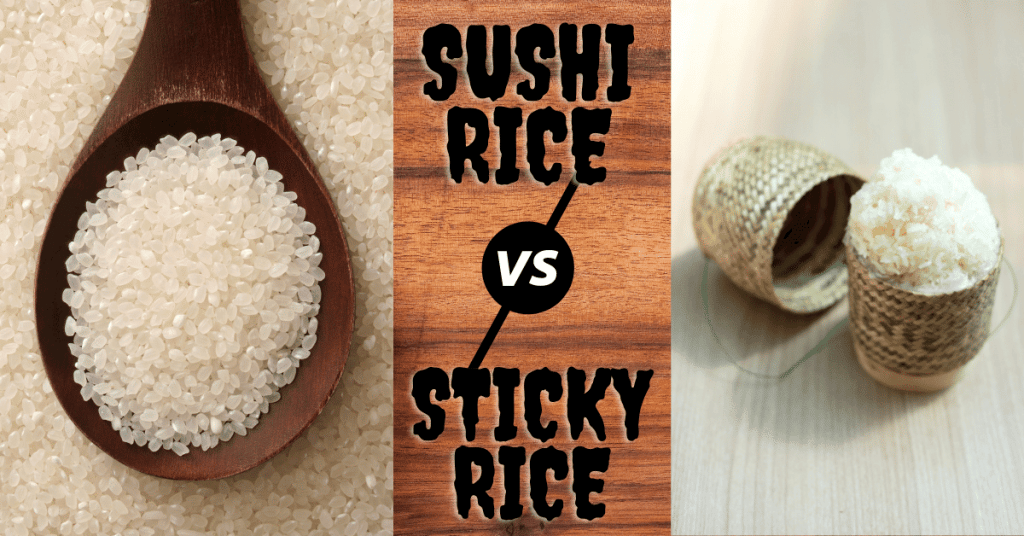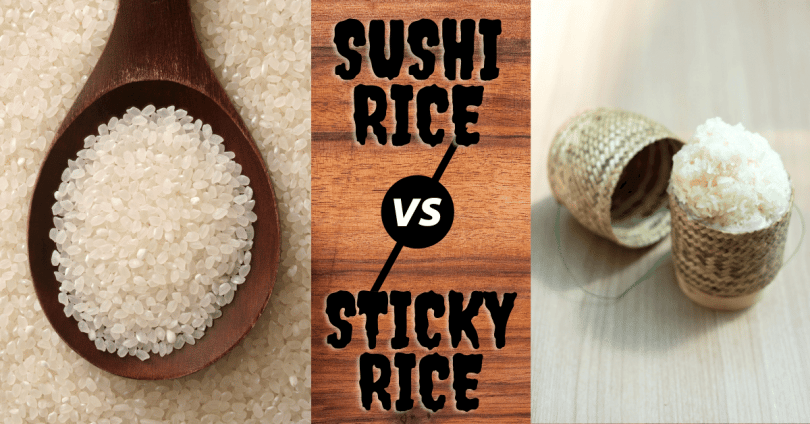When it comes to sushi, there are two types of rice that are commonly used: sushi rice and sticky rice. While both types of rice can be used to make sushi, they each have their own unique properties that make them better suited for different types of sushi. In this article, we’ll take a closer look at the differences between sushi rice and sticky rice, as well as when to use each type of rice for making sushi.
When it comes to sushi rice vs sticky rice, there are a few key differences that you should know about. Sushi rice is a specific type of Japanese short-grain white rice that is typically used for making sushi. This type of rice is usually seasoned with vinegar, salt, and sugar before being used to make sushi. Sticky rice, on the other hand, is a type of rice that is native to Southeast Asia and is often used in Chinese and Thai cuisine. It is called sticky rice because it is much stickier than other types of rice.

One of the main differences between sushi rice and sticky rice is the way they are cooked. Sushi rice is typically cooked in a rice cooker while sticky rice is usually steamed. This difference in cooking method results in different textures. Sushi rice is firmer and less sticky than sticky rice.
Another difference between sushi rice and sticky rice is the type of grain that is used. Sushi rice is typically made with short-grain white rice while sticky rice is made with long-grain rice. The different types of grains used results in different taste and textures. Sushi rice is usually less sweet than sticky rice.
Sushi Rice:
Sushi rice is a short grain rice that is typically used for making nigiri sushi, as well as sushi rolls. Sushi rice is sticking and slightly sweet, which makes it the perfect base for nigiri sushi, where the rice is topped with fish or other toppings. Sushi rice is also ideal for sushi rolls because it holds together well and doesn’t fall apart when you bite into it.
Sticky Rice:
Sticky rice, on the other hand, is a long grain rice that is typically used for making maki sushi. Sticky rice is, well, sticky – which makes it ideal for sushi rolls because it helps the nori (seaweed paper) and fillings stay together. Sticky rice is also less prone to overcooking, so it’s a good choice if you’re new to making sushi.
So, which type of rice should you use for making sushi? It really depends on the type of sushi you’re making. If you’re making nigiri sushi or sushi rolls, then sushi rice is the way to go. If you’re making maki sushi, then sticky rice is the better choice.
Of course, you can experiment with using different types of rice for different types of sushi. For example, you could use sticky rice for nigiri sushi or sushi rolls, or you could use sushi rice for maki sushi. It’s all up to you! Ultimately, the best way to figure out which type of rice you prefer is to experiment and try out different types of sushi with different types of rice.
Related Articles!







